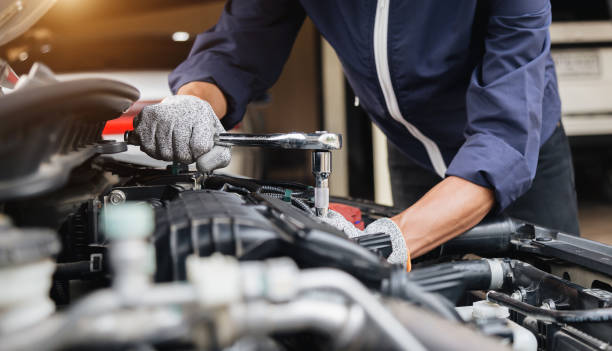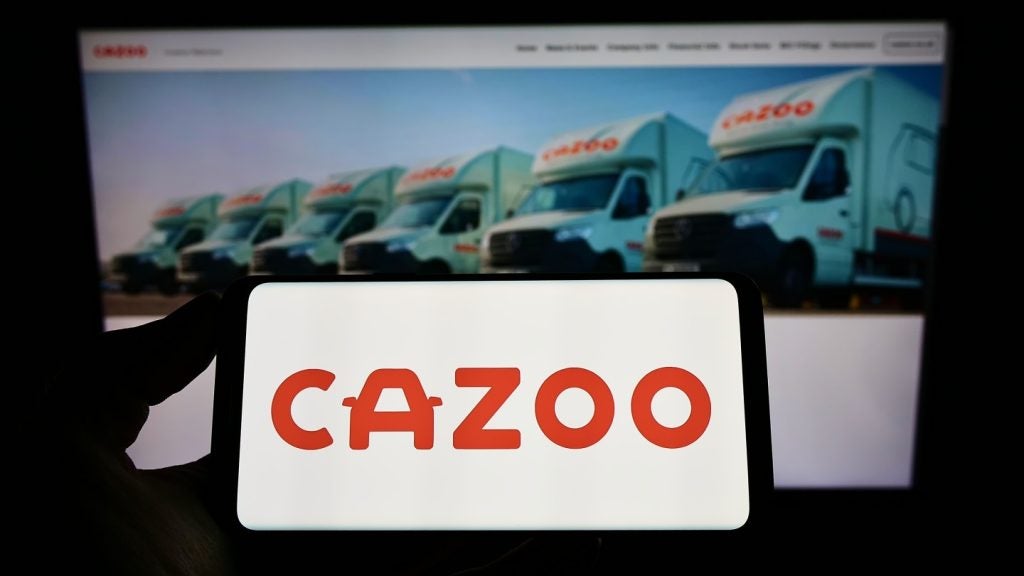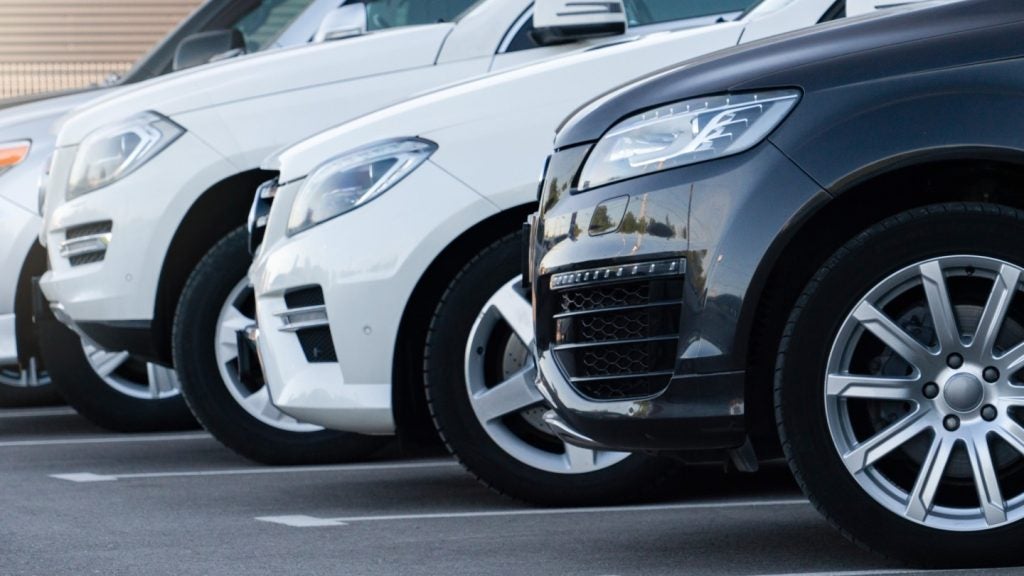
Online retail is still very much in its infancy in the new car market. Yet the end of 2016 and start of 2017 has seen a number of manufacturers launch online outlets. Jonathan Minter investigates what makes cars unique in the online space, and the main challenges this presents
“When Amazon launched in 1994 as an online bookstore, the world was just beginning to explore the possibilities of online retail. Twenty-three years later, and Amazon is one of the largest companies in the world, having put numerous bricks-and-mortar bookstores out of business, and expanding into selling just about anything you could want.
In the intervening period, online retail has gone through a boom and bust – the so-called ‘dotcom bubble’ – and recovered to become hugely important in most walks of life.
Today, companies like eBay and Alibaba have joined Amazon as multi-billion-dollar online retailers, alongside numerous smaller players, with the majority of high street stores also offering an online outlet. Today you can buy almost anything online – from ‘unicorn meat’ to a house.
Yet new car sales have remained, for the most part, offline. If you want to buy a new car, in the majority of instances you have to physically go into a dealer to buy your car. But that is starting to change. The end of 2016 and the start of 2017 saw a number of manufacturers release online webstores, allowing customers to configure and purchase cars online.
Cars are a uniquely challenging item to sell online. The majority of them are complex machines, sold on secured finance, need regular servicing and MOTs, have a large and entrenched dealer base, and are often part-exchanged as part of the deal for the next car.
How well do you really know your competitors?
Access the most comprehensive Company Profiles on the market, powered by GlobalData. Save hours of research. Gain competitive edge.

Thank you!
Your download email will arrive shortly
Not ready to buy yet? Download a free sample
We are confident about the unique quality of our Company Profiles. However, we want you to make the most beneficial decision for your business, so we offer a free sample that you can download by submitting the below form
By GlobalDataOn top of this, the car-selling environment is highly regulated. This is part of the reason given by Lee Jelenic, vice-president of marketing at Ford Credit US, who also notes there are a multitude of stakeholders in a typical new car transaction – the dealer, the OEM itself, usually a finance company, often an insurer, and then sometimes other after-market product providers such as warranty and maintenance plans. This only adds to the complication of selling a car online.
In the US, he adds, this is then compounded by much of this being regulated at state or local level, and he notes: “In many states, there are specific contracts to that state, and there are specific regulations around those contracts that say the customer must sign on an actual piece of paper with wet ink.”
Maria Rogers, Peugeot’s head of digital and project manager for Order Online by Peugeot, is willing to testify to the challenge of creating a successful online webstore.
Overcoming these challenges is necessary, however, as she notes: “Buying habits have changed; people no longer see us as a forever purchase and they see it as more of a monthly rental. People are used to doing research online, they’re used to buying expensive kitchens and bathrooms online, and even holidays. This is the next logical step.”
While this is an important development, as it is such a new field, different manufacturers are exploring different options. Peugeot, for example, is offering a number of vehicles from its range for online purchase, either via its Passport Purchase or Just Add Fuel finance options, with customers able to arrange to have the car delivered, if they wish, or pick it up from the dealer.
Interestingly, at launch, cash buying is not possible – with Rogers saying the company focused on the ways most people buy their cars initially, and that the plan is to bring in cash buying and even contract hire in the future.
Hyundai, meanwhile allows customers to buy their car online either via cash or through finance, and can either collect the car from a dealership or have a dealer deliver it. However, those choosing finance need to go into the dealership to physically sign the finance document.
According to Tony Whitehorn, president and chief executive officer at Hyundai, this was the result of a choice Hyundai has made, as opposed to a technological barrier. He says the company wanted to make sure the customer fully understood the finance agreement they were signing up to.
He notes: “We didn’t want to have, at this moment in time, the customer walking into a dealership for the first time to pick up their car, not knowing who this person was who was handing over the car.
“The thinking was to make this a bit of a staged process – the transaction’s been done, they’ll just go in and sign, and that’ll give the customer the opportunity to check they’re happy with everything and they can then come and pick up the car next week or whenever.”
This is one of the parts Hyundai is monitoring, he admits, and this may change in the future if Hyundai feels customers could be equally served with e-signatures.
Whereas Hyundai and Peugeot both offer a central site for the customer to buy their car, which is then satisfied through a dealer, Ford US’s online offering is through a dealer website – currently Ford Ricart in Ohio. Asked about the advantages and disadvantages of the two methods, Jelenic admits: “You’re asking the same questions we are. We need to find the right balance of how to get this into the hands of our customers and our dealers.”
Despite this difference, all three maintain the dealer remains central to the online experience; Whitehorn states that when developing Hyundai’s offering, dealers were saying they wanted to be part of this, while Hyundai was telling dealers they needed to be part of it.
The reason he gives for the importance of maintaining a dealer model even with an online store is that it is what the customer wants. It is not like buying a washing machine, he explains, where typically the customer buys the machine and does not interact again. Instead, Whitehorn says: “You buy a car, and you want to know you’re going to have it serviced in a year’s time. And if it goes wrong, where do they go to? Everyone wants a relationship with a body – in effect a dealer.”
Rogers is equally clear when she says: “Peugeot are facilitating the deal, but it’s always the dealer that sells the car to the customer.”
Dealers are not the only company involved in this, and it is clear that these sites require a great deal of collaboration between dealer, manufacturer and the lender, assuming finance is an option. In America, Ford also teamed up with California-based startup AutoFi to create the site.
Jelenic says the combination of Ford Credit and AutoFi made for a strong team, with Ford bringing decades of institutional knowledge and millions of customer contracts, and AutoFi bringing a laser focus on a very important decision-making and purchasing process.
As an example of what that means, Jelenic mentions that Ford Credit sometimes thinks in terms of weeks, and maybe even months. In contrast, AutoFi think in terms of minutes and hours, and as a result he notes the online experience is being upgraded rapidly. To help the two teams work well together, Ford Credit even made an equity investment in AutoFi.
Another area where manufacturers have taken slightly different approaches to a problem is around haggling. Haggling has long been a key part of the car-buying experience, to the joy of some and chagrin of others. However, haggling has not lent itself to the online experience as well as it has to face-to-face exchanges.
This is something the manufacturers have had to respect, and has also provided another reason to keep dealers central to the retail environment.
At Peugeot, for example, Rogers says the site starts with a national price, up to the point where the customer has selected a dealer. Then there may or may not be a discount added in by the dealer. She notes that the manufacturer had expected, and has seen, people configure their car, build their deal, print it out, and then go to have a haggling discussion physically at the dealer.
At Hyundai, the problem has been tackled slightly differently: The price given online is a transaction price and not a list price, and the dealer gets a handling charge for that. That price is advertised both nationally in dealerships for these models and online.
He says: “People want a good deal. We are saying to them: ‘You’re going to get a good deal on this one. You’re not going to have to go haggling. If you want to go haggling, you can, but you’re unlikely to get a better deal because the dealer is on a handling charge, not a margin.’”
At Ford, the system is more similar to the Peugeot experience, with the online experience generally catering for those who prefer the convenience of a quick sale, and the dealer still existing for those who wish to try and negotiate a better price.
Even online, however, Jelenic says there is room for some negotiating thanks to the part-exchange part of the system.
Like haggling, the part-exchange is a common part of the process for most new car buyers, with an old car being put towards the deposit for a newer model. All three sites offer the customer the ability to get a valuation for their existing vehicle. This is an area where retailers need to tread carefully. Being told a part-exchange is worth an amount online, only to go into the dealership to find it is worth notably less could potentially ruin a shopping experience.
There are a couple of responses to this. The first, which all three make, is to be extremely clear with the customer about the valuations. At Peugeot, for example, Rogers says: “We ask you some questions – current mileage, if it has two sets of keys, service history and so on – but we also ask you what condition the car is in. We’re quite specific in how you define these conditions, so you have excellent, good, fair and non-run, and we give you a very clear idea of what we mean by those terms.”
This is complicated at Peugeot, though, as the online system allows customers to order cars yet to be built, and as a result there is the potential for a multi-month gap between the customer getting that valuation and actually handing over the car. In the intervening time between ordering a car and picking it up, the old vehicle due to be part exchanged may change condition, or even be sold privately, and the company needs to be aware of this.
To combat this, Peugeot has a ‘concierge’ team that looks after the customer from time of order to handover, and will follow up with the customer once the order is ready.
Although Ford’s system is currently similar in terms of having customers grade their car online, Jelenic adds: “We’re thinking of adding picture uploads and things like that. We’re looking to see if our customers have the right tools to give an accurate portrayal of what their vehicles should be, and are they walking in to the dealer fully informed.”
Whitehorn says that if customers are given enough answers, they will not overstate the quality of their cars. He notes: “If people are in the process of thinking: ‘I’m going to buy a car, this is going to be my deposit,’ they don’t want to go in and think: ‘Crumbs, I’m not getting £5,000, I’m getting £4,500, so now I’ve got to find another £500.’”
This is in contrast to the situation which might exist on a site like webuyanycar.com, where the consumer is looking to sell their car, and therefore the mind-set might be to try and big up the car online before a face-to-face negotiation.
As a result, Whitehorn says of the 30 cars Hyundai had sold at the time of the interview, none had been upsold, and Hyundai was willing to take the risk on these cars instead of the dealer.
Selling new cars online is in its infancy. As a result, we are seeing a variety of manufacturers tackle pan-industry challenges in a variety of ways.
Despite this, there are a few key pieces of advice given to any OEM looking to create an online store.
For Whitehorn, the one of the key pieces of advice is to be “unbelievably transparent”. For him, this includes the fact that customers should not be able to get a significantly better deal in a dealership than they could get online.
Secondly – and just as importantly, he notes – the dealer has to be part and parcel of the whole process.
“The process should be doable entirely online,” he says. “However, when they come to pick up the car or have the car delivered, that should be done via a dealership.”
For Jelenic, listening to customers and speed of response are two areas that finance companies need to be aware of; he notes that Ford Credit recognised it could go faster by partnering with AutoFi, and it could create a one-team effect by investing in it.
“By doing those things, we’ve put ourselves in a position to look into our customer more, respond faster and deliver something we believe improves a very important purchase process for our customer.”
Another factor brought up – this time by Rogers – is to make sure the online shop is both brand-consistent and clear.
For the former, she says her team spent a lot of time looking at how Peugeot presented its cars, and tried to make sure everything on the site sat within that framework.
The second part of her advice is to be as clear as possible. “We’ve been desperate to keep it very clear and very intuitive. Buttons are clear, there aren’t lots of buttons, and the process is straightforward. And we have a call centre to support in terms of live chat and phone calls.” As well as the call centre, the dealers still exist as an additional route for support, if needed.
Positive early signs
Although these online shops are all in their infancy, this has not stopped those in charge from making some early observations.
Each interviewee who speaks to Motor Finance is able to point to an example of how much quicker buying a new car online can be.
Jelenic talks about a female customer in Ohio: “She had never been to Ricard Ford, and had never made contact with the dealer. Just before 4:30pm one day she clicked on the Buy Now button that we installed, and began going through the AutoFi process; by 5pm she had completed it. You can complete it faster, but she took a little time going through the different offers she was approved for.”
After this, the customer went to the dealer, took the car she had selected out to drive, signed the documents she needed to sign and by 6:20pm she had completed the deal, and left the dealership in her new vehicle.
In other words, having never visited the dealership before, the customer was able to finance and buy a brand new vehicle from Ricard Ford in under two hours, including the time it took to get to the dealer and to test drive the new vehicle.
Whitehorn and Rogers are both able to point to similar customer experiences, and the advantages of an online shop are clear.
An online presence also has obvious advantages to manufacturers. Whitehorn, for example, is able to point to 134,000 visits to Hyundai’s online shop in the first three weeks. Of these, 17,000 went on to configure a car, 473 people opened an account with Hyundai, 125 people applied for finance, and 30 people actually purchased a car entirely online.
Even beyond this number, Whitehorn says: “It’s generated interest, and we’ve had people going into dealerships saying: ‘I saw that Click to Buy thing; I’ve never thought about buying a Hyundai, tell me about it.’”
In other words, having an online retailer at this point in time is also driving foot traffic into Hyundai dealerships.
In terms of who these customers are, it is too early to make any definitive statements yet, but some interesting information has already arisen.
Unsurprisingly, at Hyundai it is reported that most people are going online between 7pm and 9pm during the week, and that all of the cars have been bought around that time. As a point of comparison, my local Hyundai dealership closes at 6pm most week nights.
Of those visiting the website, 44% of people who have gone online have done so via their mobile phone, as opposed to on a tablet or a PC, making mobile phone the most popular format to visit Click to Buy.
In terms of geography, Whitehorn says visitors tend to be from large urban areas, with London, Glasgow and Birmingham consistently the three most popular towns.
According to Rogers, Order Online by Peugeot has seen coverage from across the UK, and although she is not able to break down the numbers much, she does reveal it is widespread, and not just from London. “There is no pattern yet,” she concludes on the topic.
One additional note she is able to mention is that many of the orders Peugeot has received have featured more options than it would typically expect.
She credits this to the transparency of the site, and the fact that customers are able to quickly compare the different options, and are increasingly viewing options as compared to the price of a coffee a week as opposed to the extra £500 or £600 it might be if paid for up front.
What is more surprising is when Whitehorn and Rogers start talking about the age of the users of Hyundai and Peugeot’s online shops. Conventional wisdom would be that online shops would be more popular with younger car buyers – especially millennials. However, in both cases this is not the case.
At Hyundai, for example the first person to buy a car online was a 63-year-old man, who first visited the website on a Friday and had finished buying by the following Sunday, without ever setting foot in a dealership.
Similarly, it is not just young people at Peugeot, which Rogers describes as interesting. At the same time, however, she warns: “I don’t feel we’ve got enough data yet to draw any conclusions. We launched this quietly because it was big and complex, and we wanted to make sure it was right. As people find out more and more about it, we’ll gather more data.”
This is the case for all manufacturers at the moment. Online new car retailing is very much in its infancy compared to most other forms of online retail, and compared to physical dealerships.
People Motor Finance speaks to are all unanimous that a growth in online can go hand-in-hand with the survival of dealerships, but how a rapid increase in online sales – given its potential impact on haggling, and decreasing amount of time people spend in dealerships as a result – would impact how a dealership operates is also yet to be seen.
How online sales grow and what form they take will have some large potential ramifications for captive motor finance providers, as well as for OEMs and dealers.
What is clear is that we are still at the beginning of this journey, and the industry has a lot of development ahead of it.







